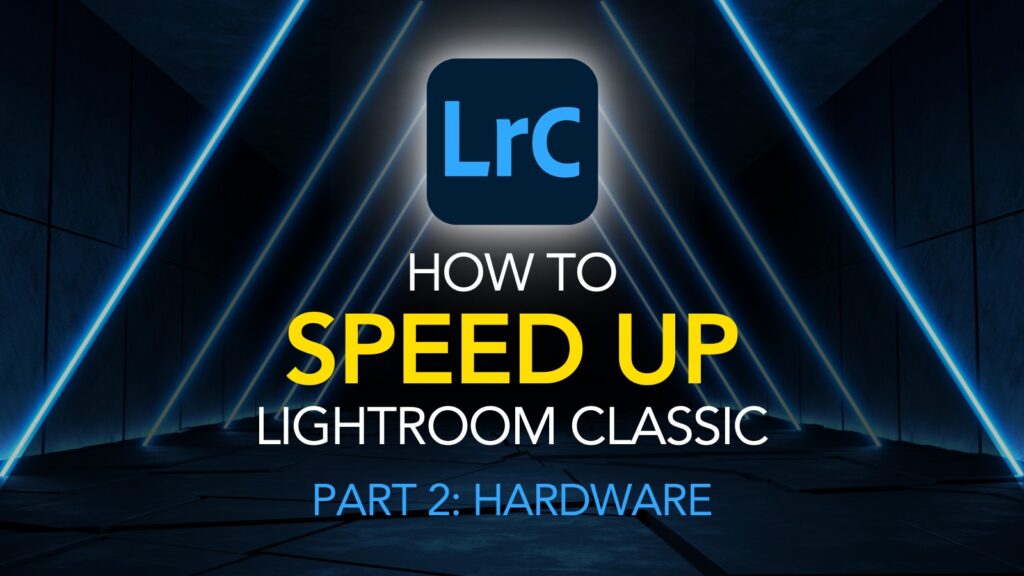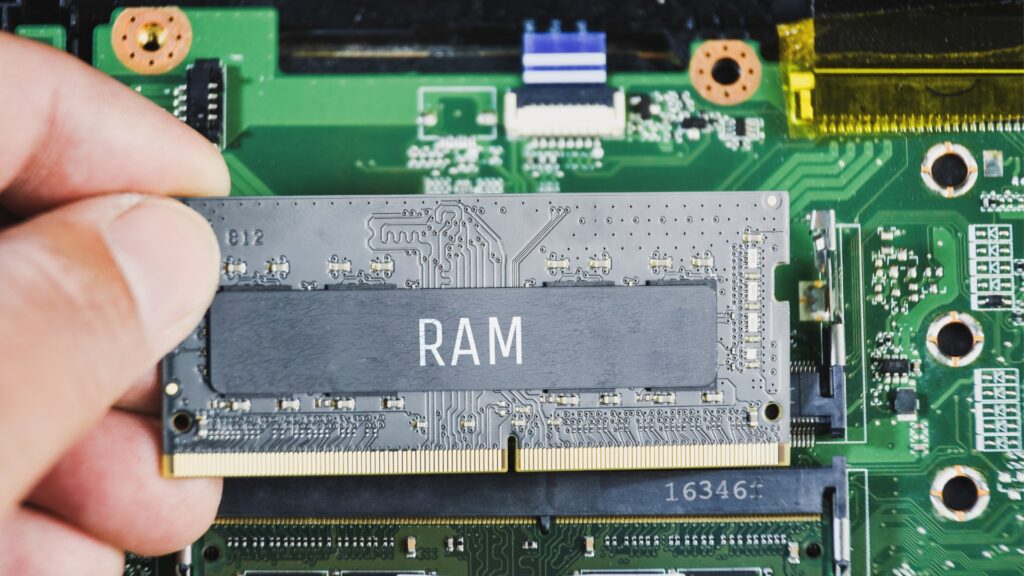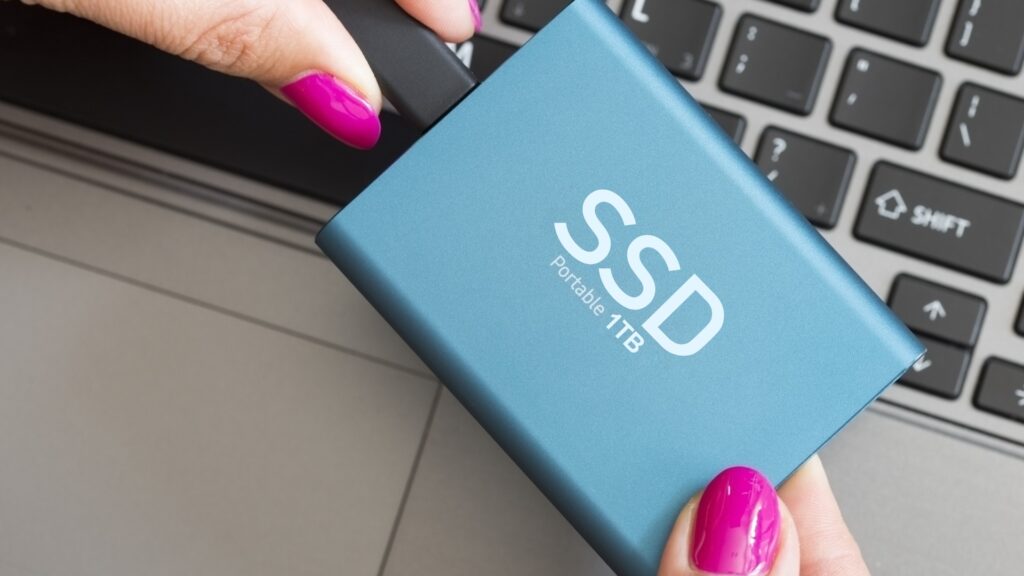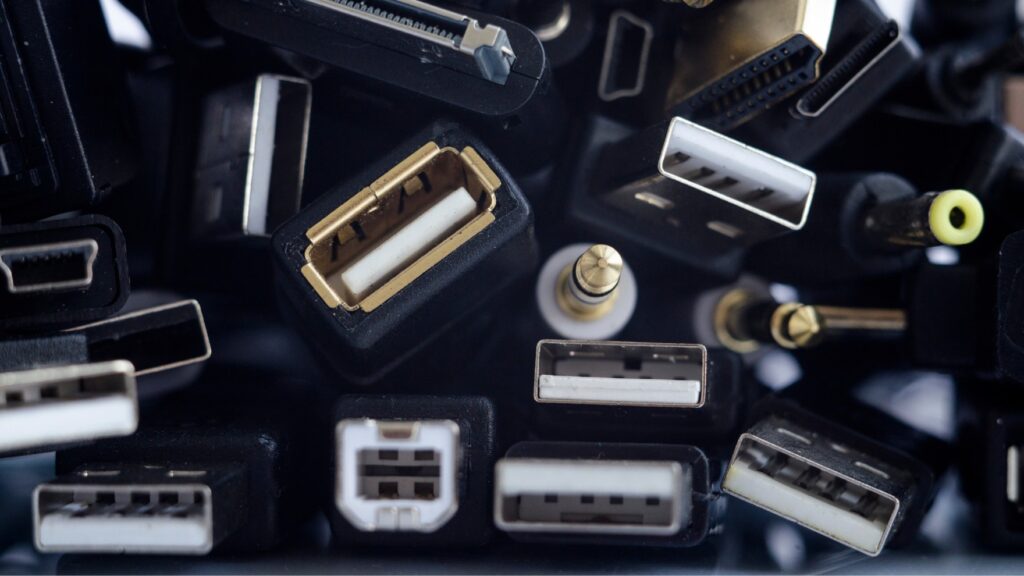In our previous post, we covered how adjusting Lightroom Classic preference settings can enhance performance. This time, we’ll delve into the crucial role your hardware and operating system play in optimizing Lightroom’s speed. While software settings are important, ensuring your hardware meets or exceeds Adobe’s recommended requirements is equally vital. In Part 2 of our Comprehensive Guide to Speed Up Lightroom Classic & Optimize Performance, we’ll explore key hardware components and system adjustments that can significantly boost Lightroom’s performance and responsiveness, especially when handling large image files.

Preferred Processors for Lightroom Classic
A multiple-core processor does make a difference in Lightroom Classic’s performance. A multi-core processor means your computer has several “brains” (or cores) that can work on different tasks at the same time. Lightroom Classic can leverage multi-core processors for various tasks, such as exporting images, generating previews, and running complex batch processes. While it is true that not all Lightroom operations are heavily multi-threaded, having a multi-core processor (ideally with at least four cores) can improve performance during resource-intensive tasks.
In addition to having multiple cores, the “clock speed” of your processor plays a crucial role. It enhances single-threaded operations, which are still common in Lightroom. Clock speed is like the speedometer of your computer’s brain—it shows how quickly each core can complete tasks. A higher clock speed means faster processing, which is important for many operations in Lightroom. For photo editing, a clock speed of around 3.0 GHz or higher is generally considered good.
You can usually find your processor’s clock speed in the computer’s specifications or by checking the processor’s model number online. This information helps you understand how fast your computer can perform tasks, ensuring smoother performance in Lightroom Classic.
It’s important to note that while a multi-core processor can improve performance, the number of threads a processor has is also worth considering. Threads are like virtual cores that help a processor manage multiple tasks more efficiently. For instance, a processor might have four physical cores but support eight threads, allowing it to handle more simultaneous processes. However, Lightroom Classic still relies heavily on single-threaded performance for many tasks. Most daily operations in Lightroom, like applying adjustments to individual photos, are single-threaded. Hence, a need for a good clock speed. So while additional threads can help, a processor with a higher clock speed and strong single-core performance will often deliver the most noticeable improvements in Lightroom.
For example, a processor that meets these standards is the Intel Core i7-12700K. This processor has 12 cores (8 performance cores and 4 efficiency cores), which is ideal for handling multiple tasks simultaneously. Additionally, it has a base clock speed of 3.6 GHz and can boost up to 5.0 GHz, providing strong single-threaded performance for tasks that require it. This combination of multiple cores and high clock speed makes the Intel Core i7-12700K a powerful choice for photo editing and other resource-intensive applications in Lightroom Classic. This is simply an example. There are plenty of processors that would fit this criteria. (P.S. With the rapid pace of technology, I’m sure this example will be out of date quickly. Please know that many processors, whether Intel or AMD Ryzen or others, will also be great options.)

Random Access Memory (RAM)
The amount of RAM is crucial for handling large image files and ensuring smooth operation in Lightroom Classic. For modern cameras, where image files are 40-50 MB, Adobe advises a minimum of 12 GB of RAM. This amount is only enough for basic operations.
For optimal performance, especially with high-resolution images or large catalogs, Adobe recommends 16 GB or more. In reality, this is the minimum that most photographers should aim for today. This amount allows Lightroom to use fast-access memory rather than relying on slower disk storage. Using disk-based storage, known as “paging” or “swapping,” can cause significant slowdowns during memory-intensive tasks like rendering previews or batch editing.
More RAM means Lightroom performs more efficiently, particularly with large, complex files. In high-performance setups, 32 GB or more of RAM provides extra headroom, especially when multitasking with other applications. This is crucial for photographers working with 4K or higher resolution images, panoramas, or HDR processing, where file sizes and memory demands are much higher.
For further optimization, consider using a dual-channel memory configuration, where two or more RAM modules work together to improve performance. When installed in pairs (e.g., two 8 GB sticks for a total of 16 GB), dual-channel memory effectively doubles the data transfer rate between the RAM and the CPU, allowing for faster processing of large files and more efficient multitasking. This setup is particularly beneficial when working with high-resolution images or performing memory-intensive tasks in Lightroom.
SSD vs HDD for Lightroom
When it comes to storage, the type of drive you use plays a significant role in Lightroom Classic’s performance. Solid-state drives (SSDs) are typically superior to traditional hard disk drives (HDDs) due to their faster read and write speeds. SSDs use flash memory rather than mechanical spinning disks, allowing for near-instantaneous access to data. This can drastically reduce loading times for catalogs, previews, and images, as well as enhance overall responsiveness when working in Lightroom. However, not all SSDs are created equal.
SATA SSDs connect through the same interface as traditional hard drives and offer substantial performance improvements over HDDs. SATA stands for serial advanced technology attachment. But if you’re looking for even greater speed, frequently work with a large catalog, and/or high-resolution images, consider NVMe SSDs. NVMe stands for Non-Volatile Memory Express. These NVMe drives use the Peripheral Component Interconnect Express (PCIe) interface, which is a type of connection used for high-speed data transfer between electronic components. This allows for much faster data transfer rates compared to SATA SSDs. The increased speed of NVMe drives can be particularly beneficial when working with large catalogs, loading previews, or moving files within Lightroom.
Note: NVMe SSDs offer significant speed improvements over SATA SSDs, especially in tasks involving large file transfers and heavy multitasking. However, if you only do simple photo adjustments or catalog navigation in Lightroom, the difference may be less noticeable. If you frequently work with a large catalog or heavy editing of high-resolution files, the enhanced performance of NVMe SSDs can be a valuable upgrade.
For those on a budget, a hybrid storage solution can strike a good balance between cost and performance. In this setup, you would use an NVMe SSD for storing your Lightroom catalog, previews, and current projects, while using a larger SATA SSD or even an HDD for archival storage. This allows you to benefit from the speed of NVMe for your most frequently accessed data, while still having ample space for older or less frequently accessed images on more cost-effective storage.
Maintain Enough Free Hard Disk Space
Maintaining adequate free space on your hard drive is indeed critical for both system and application performance, including Lightroom Classic.
When a hard drive begins to fill up, the system’s ability to efficiently manage data becomes compromised. This is particularly true for applications like Lightroom that rely on creating and managing temporary files, caches, and previews. These operations require not only the space to store these files but also additional overhead space for efficient disk operations.
Maintaininging at least 20% of the total disk space free represents a best practice for optimizing disk performance, especially for SSDs. With more free space available, the disk fragments less over time. This reduces the time it takes for the system to read and write data. If there isn’t adequate free space, excessive disk fragmentation can occur, causing files to break up and scatter across the disk. This fragmentation forces the read/write head of an HDD to move more frequently, which significantly slows down operations. Even on an SSD, which doesn’t have moving parts, maintaining free space is important for avoiding wear leveling issues and ensuring that the drive’s performance remains optimal over time.
For example, with a 1 TB drive, keeping at least 200 GB free is a good practice to allow for smooth operation. If this free space buffer is not maintained, you might experience significant slowdowns, as the system struggles to find contiguous blocks of free space to process your editing keystrokes. This can also lead to increased swap file usage if your physical RAM is insufficient, further degrading performance. In extreme cases, if the disk runs completely out of space, Lightroom or even the entire operating system could crash or become unresponsive due to the inability to write the necessary data to disk.
In short, maintaining sufficient free space is not just about having room for files. It’s about ensuring that your storage device can operate at peak efficiency, thus allowing Lightroom and other applications to perform optimally.
Where to Store Your Lightroom Catalog & Image Files
The choice of storage strategy for Lightroom catalogs and image files depends on several factors. These factors include the size of the image library, the speed of the storage media, and the connection type.
Internal SSD vs. External Hard Drive
Storing your Lightroom catalog on an internal solid-state drive (SSD) tend to offer significant benefits. This is because typically internal SSDs deliver much faster read and write speeds than traditional hard disk drives (HDDs) and even many external SSDs. This speed advantage proves crucial for tasks such as loading large catalogs, accessing previews, and saving edits, which can slow down if you store the catalog on a slower external drive. Additionally, internal SSDs connect directly to the motherboard, providing a higher bandwidth compared to most external connections.

How to Handle Storage Space Constraints with Lightroom
For photographers who manage a large library of images, you can quickly run out of internal storage on your computer or laptop. High-resolution images, especially in RAW format, can consume a substantial amount of disk space. Let’s suppose your image library (all your image files) is less than 2 TB. Second, let’s assume you have a large storage capacity on your computer. If both of those are true, then keeping both the catalog and all your image files on your computer’s internal drive is ideal. This setup offers the fastest access speeds and minimizes potential performance bottlenecks.
However, as your image library grows beyond the internal drive’s capacity, typically as it exceeds 2 TB, you’ll need to use an external drive. In this case, it is recommended to keep the Lightroom catalog on your computer’s internal SSD for optimal performance. Then, store the image files on a fast external drive to maintain good performance.
Alternatively, there is a third hybrid approach. Store the Lightroom catalog and your most recent images on your computer’s internal SSD while offloading older images to an external hard drive. This is a pragmatic solution that balances speed with storage capacity. Also, this method ensures that the images you are currently working on are accessible quickly, while older, less frequently accessed images are stored on slower, external media. This approach has the added benefit of freeing up valuable internal storage space without compromising too much on performance.
To implement this strategy, establish a routine for migrating older images from your computer’s internal SSD to an external drive. This routine could be annual, quarterly, or based on a project or collection’s completion. Additionally, it’s important to maintain a well-organized folder structure and use Lightroom’s built-in tools for managing external files. This will help avoid issues when reconnecting or accessing older images.
Network-Attached Storage (NAS), Direct-Attached Storage (DAS), and Cloud Storage
For photographers managing large, growing libraries, Network-Attached Storage (NAS) offers a scalable and flexible solution. NAS devices allow multiple users to access and share files over a network. This provides centralized storage that can grow with your needs. However, while NAS is great for storage and backup, it’s important to note that editing files directly from NAS can introduce performance limitations due to network speeds. For most users, accessing and editing large files directly from a NAS may result in slower performance compared to working with local storage.
An alternative to NAS is Direct-Attached Storage (DAS). DAS connects directly to your computer via high-speed connections like Thunderbolt or USB 3.2. DAS solutions often offer better performance for direct editing compared to NAS. This is because it bypasses network-related bottlenecks. For most of us, we don’t need to share files over a network with others, so DAS is a more efficient and straightforward solution. A Redundant Array of Independent Disks (RAID) enclosure connected via Thunderbolt is a good example of DAS. It makes a more suitable option for photographers who need quick access to large image libraries without the network bottleneck.
Editing files directly from the cloud can be slower due to latency (the delay in data transmission) and bandwidth limitations. This means your internet connection speed can significantly impact performance. For this reason, it’s often more practical to use cloud storage for backup purposes. Then, rely on local storage for active editing to ensure smoother, faster operation.
Fast External Drives and Connectivity
When using an external drive, it’s crucial to choose one with fast read/write speeds. SSDs are generally preferred over HDDs for this purpose. However, the performance of an external drive also depends on the connection type. High-speed connections like USB 3.1, USB 3.2, or Thunderbolt can significantly reduce lag when accessing large image files. These connections are much faster than older USB 2.0 or standard USB 3.0 connections. Thunderbolt, in particular, offers very high data transfer rates and low latency. This makes it ideal for professional photographers with large datasets.

For users handling extremely large files, such as high-resolution video content, it might be worth researching newer technologies like USB 4.0 or Thunderbolt 4. While they are relatively new, they promise even faster data transfer rates and enhanced performance. USB 4.0 and Thunderbolt 4 are designed to handle high-bandwidth applications more efficiently, ensuring smooth performance even with demanding tasks.
Summary
Optimizing Lightroom Classic’s performance requires careful consideration of both hardware upgrades and effective storage strategies. Start by investing in a multi-core processor with a high clock speed. Next, aim for at least 32 GB of RAM, ideally configured in a dual-channel setup for optimal performance. Upgrade to an SSD—preferably an NVMe SSD—for faster data access. And ensure you keep at least 20% of your disk space free to avoid slowdowns and fragmentation.
For extensive libraries, balance your storage needs by using a combination of internal SSDs, fast external drives, and possibly a NAS or DAS solution, along with cloud storage for backups. When choosing external drives, prioritize those with high-speed connections like USB 3.2 or Thunderbolt for minimal lag.
Balancing Cost and Performance: It’s important to recognize that not every photographer needs the most expensive or cutting-edge hardware. Assess your specific needs. Consider the resolution of your images and the size of your Lightroom catalog when determining how to allocate your budget. For many photographers, a mid-range processor, 32 GB of RAM, and a well-chosen combination of SSD and external storage will offer excellent performance without breaking the bank. Focus on the components that will most significantly impact your workflow. Then, you can achieve a fast and efficient Lightroom experience without the unnecessary expense.
This balanced approach ensures you’re investing in the right areas, enabling you to work efficiently while keeping costs under control.
Next: See Part 3 on How to Efficiently Manage Previews for a Fast Lightroom Experience
Optimizing your hardware and operating system is a pivotal aspect of improving Lightroom’s performance. With these adjustments, you should notice a significant increase in speed and efficiency. But wait, there’s more! In Part 3 of this series, we’ll tackle how to manage your Lightroom previews which is a critical way to speed up your Lightroom experience.
Part 3 will drop in December 2024. If you don’t receive my newsletter, sign up below to be notified when Part 3 is published!
Hi, very useful article, thank you! BUT what about GPU? After a lot of web research, I still do not understand if a dedicated gpu is mandatory or not. And if yes, wich tasks does really use a gpu? Thank you!
Great question! No, you don’t need a dedicated GPU (graphics card) for Adobe Lightroom Classic, but having one can improve performance in specific scenarios.
A GPU helps most when using high-resolution displays (4K or higher), applying AI-powered tools like masks and brushwork, or during GPU-accelerated exports. But it won’t make much difference for Library tasks like culling, sorting, or keywording—or for basic slider edits in the Develop panel.
If you’re using a desktop and want a smoother experience in the Develop module, adding a modern mid-range GPU—one designed for creative workloads or light gaming—can boost performance and help future-proof your system.
For modern systems—especially Macs with M1, M2, or M3 chips—the built-in graphics are already optimized and handle Lightroom Classic very well.
Hope that helps!